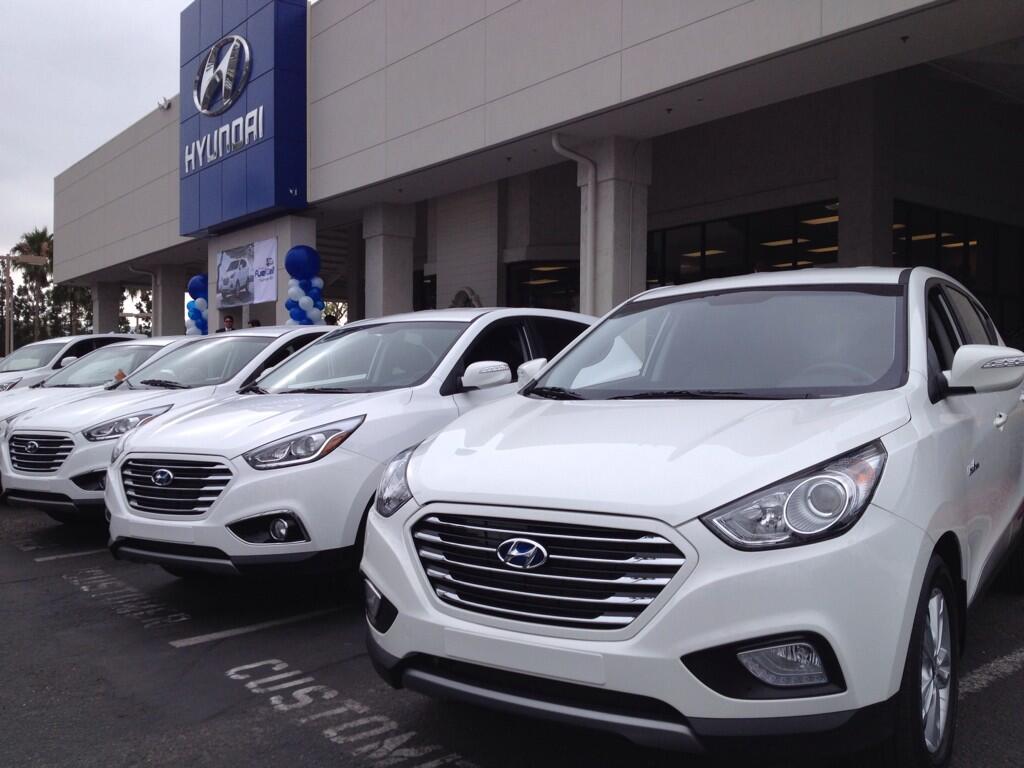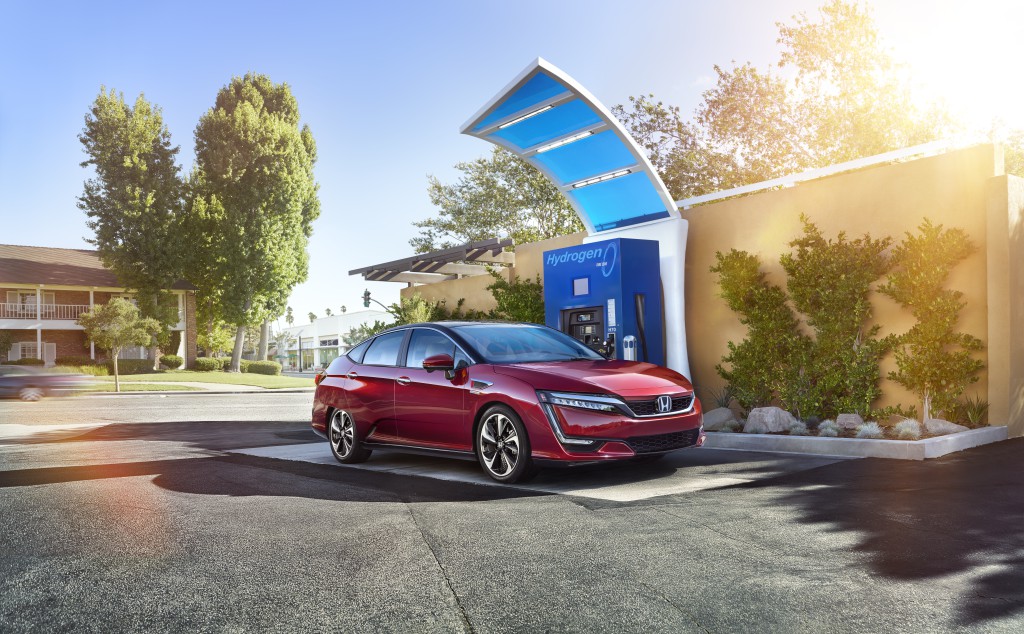In addition to automakers and policymakers, battery-electric cars can count on support from a variety of advocacy groups.
But grassroots support for hydrogen fuel-cell cars hasn't germinated to quite the same extent.
So, in the absence of a large cadre of individual consumers to act as advocates, a mix of automakers, infrastructure companies, and oil companies have now committed to fund the promotion of fuel cells.
DON'T MISS: GM, Honda set up joint fuel-cell manufacturing plant, 2020 production goal
Earlier this month, 13 companies—most currently involved in fuel cells to some extent—announced the creation of the Hydrogen Council, with a mission to "position hydrogen among the key solutions" for carbon-free transportation and energy, according to its position paper (pdf).
Participants include: Air Liquide, Alstom, Anglo American, BMW Group, Daimler, ENGIE, Honda, Hyundai, Kawasaki, Royal Dutch Shell, The Linde Group, Total, and Toyota.
Honda, Hyundai, and Toyota all currently sell fuel-cell cars in several markets, including the U.S., albeit in small numbers.

BMW i8 hydrogen fuel cell concept
BMW unveiled hydrogen fuel-cell prototypes based on its i8 plug-in hybrid coupe and 5-Series Gran Turismo hatchback last year, and has said a production fuel-cell car will arrive sometime after 2020.
Daimler's Mercedes-Benz division is expected to launch a fuel-cell version of its GLC-Class crossover later this year, although it may turn out to be a low-volume model.
Also among the Hydrogen Council members is Air Liquide, a hydrogen-infrastructure company that has installed 75 fueling stations globally.
ALSO SEE: Hydrogen marketing campaign suggests, 'Let's clear the air' (Oct 2016)
It hopes to expand the U.S. hydrogen-fueling network beyond California by building a handful of stations in the Northeast.
The presence of oil companies Royal Dutch Shell and Total indicates that the oil industry may view hydrogen as a potential bulwark against decreased global consumption of gasoline and diesel fuel in the future.
Oil companies can supply natural gas as a raw material for hydrogen production, and may be able to apply their experience with fossil fuels to transporting hydrogen.

First 2015 Hyundai Tucson Fuel Cell delivered to lessee at Tustin Hyundai, June 2014
The Hydrogen Council plans to focus on promoting hydrogen for both transportation and energy purposes.
Its position paper adopts familiar arguments previously used by automakers to explain the advantages of fuel-cell vehicles, noting their relatively long ranges and quick refueling times.
It also advocates pairing hydrogen production with renewable energy as a way to regulate intermittent production from wind or solar power sources, allowing energy to be stored for later use as vehicle fuel.
MORE: Battery-electric cars more cost-efficient at cutting emissions than fuel cells: Stanford study (Nov 2016)
In one scenario discussed in the paper, excess power from these sources could be diverted to producing hydrogen through electrolysis, making use of the electricity and lowering the carbon footprint of the hydrogen produced.
However, a recent study conducted by researchers from Stanford University and the Technical University of Munich found that producing hydrogen in this way may only be possible on a small scale.
The study also concluded that battery-electric cars are a more cost-effective way of reducing emissions than hydrogen fuel-cell vehicles.

2017 Honda Clarity Fuel Cell
The first meeting of the Hydrogen Council took place during the World Economic Forum conference in Davos, Switzerland, where politicians and the ultra-wealthy meet to discuss the world's problems in opulent surroundings.
At the meeting, Council members discussed plans to work with and provide recommendations to policymakers, as well as increase investment in hydrogen and related businesses.
Members pledged a combined $10.7 billion investment in vehicle and infrastructure development over the next five years.
_______________________________________________











